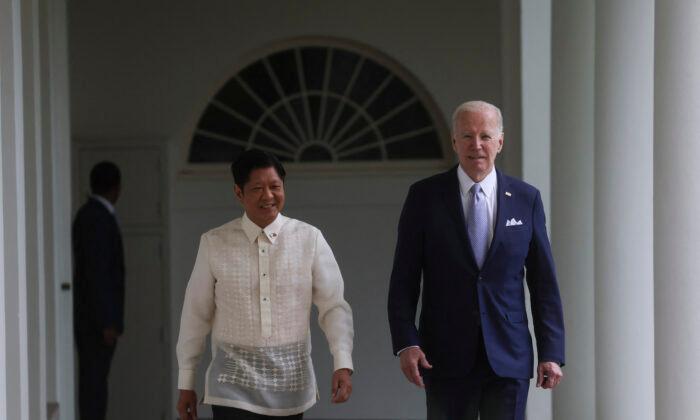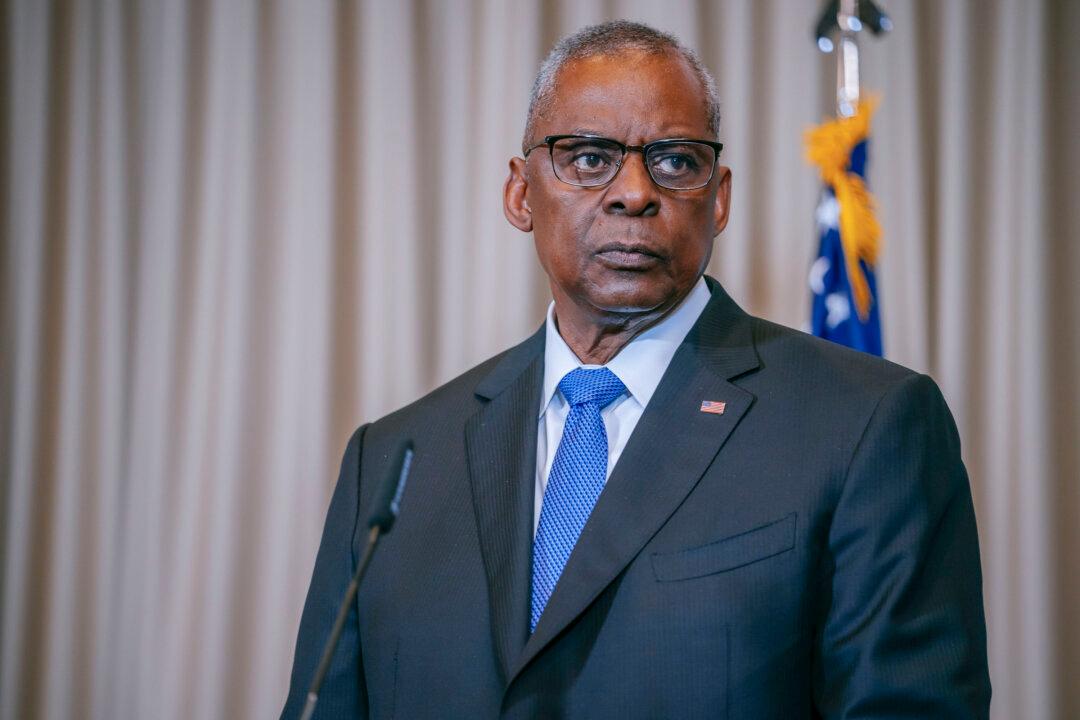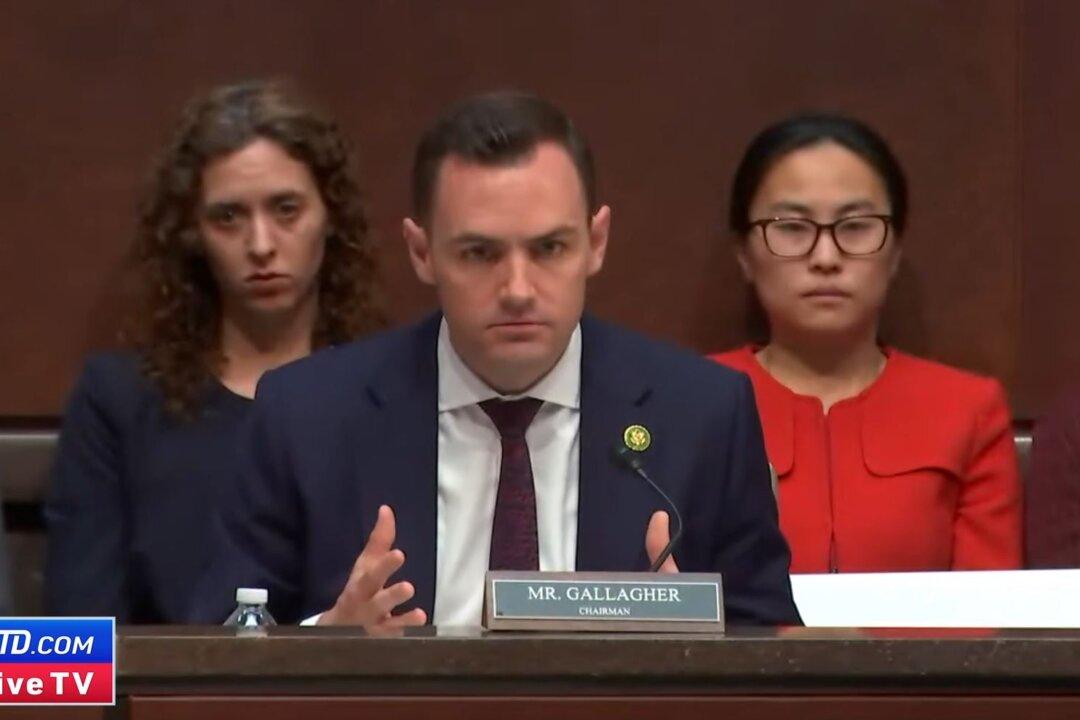The United States and the Philippines will share real-time intelligence about China’s military activities in the Pacific, the Pentagon said.
U.S. Defense Secretary Lloyd Austin and his Philippine counterpart, Carlito Galvez, established the Bilateral Defense Guidelines on May 3.
As part of that agreement, the two nations will increase their military coordination and interoperability, including by “striving toward real-time information sharing” and “broadening information sharing on early indicators of threats to the peace and security of both countries.”
The two powers also affirmed that their mutual defense agreements will extend to any attack that takes place on either power in the region, meaning a Chinese assault on the Philippines would draw a military response from the United States and vice versa.
The guidelines also extend mutual defense to include new and emerging domains such as cyberattacks and gray-zone conflict.
“Recognizing that threats may arise in several domains—including land, sea, air, space, and cyberspace—and take the form of asymmetric, hybrid, and irregular warfare and gray-zone tactics, the guidelines chart a way forward to build interoperability in both conventional and nonconventional domains.”
China’s Continued Aggression
The new defense guidelines follow closely behind a meeting between U.S. President Joe Biden and Philippines President Ferdinand Marcos Jr. at the White House on May 1, where the two agreed to increase military coordination.During that meeting, Biden and Marcos agreed that the United States will transfer three C-130 aircraft to the Philippines and consider the possibility of sending maritime patrol vessels as well, which the Bilateral Defense Guidelines follow through on by outlining a five-year year joint military modernization program for the two nations.
“What we’ve seen recently is a series of continuing provocative acts on the part of China testing and probing into the Philippines’ waters, in areas of deep concern to the Philippines,” a senior Biden administration official said during an April 30 press call about the summit.
The official added that, while Marcos had previously been reluctant to get involved in the expanding competition between the United States and China, the leader was now being forced to diversify the Philippines’ security engagements in light of China’s continued aggression.
That aggression now extends beyond fishing disputes and into the realm of outright threats on the lives of Filipinos.
The Philippines must cease its defense cooperation with the United States, he demanded, “if you care about the 150,000 overseas [Filipinos in Taiwan].”
Beijing, however, claims that the base access could allow the United States to defend Taiwan, which the CCP claims is a rogue province that must be united with China by any means necessary.
However, Marcos said the Philippines will not be used as a staging point for military action. National Security Council Coordinator for Strategic Communications John Kirby said that U.S. access to the four EDCA bases was just one aspect of a much broader alliance.
“There’s a whole lot more to this alliance and this bilateral relationship than just these four sites,” Kirby said during a press call on May 1. “This alliance doesn’t exist because of one other nation … it’s not designed for this purpose.”






Friends Read Free